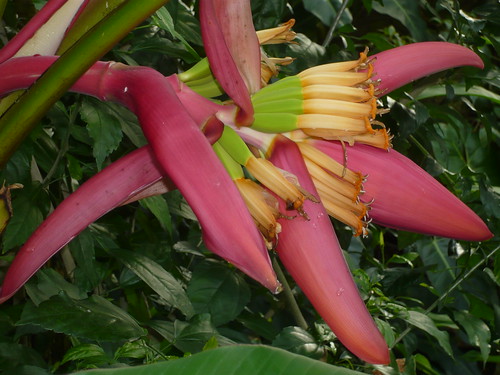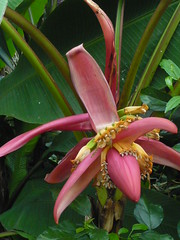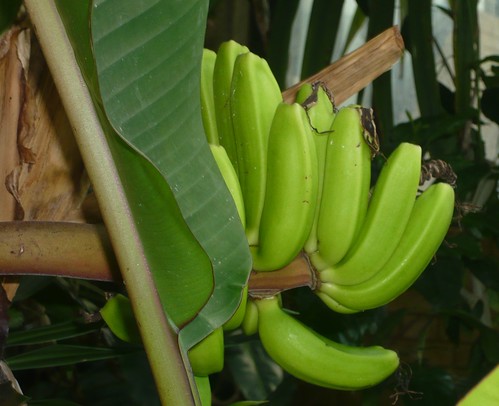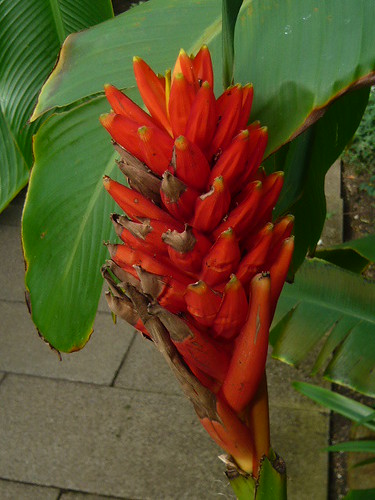Banana Growing in England (no seriously)

The cultivated banana comes from the genus Musa. Musa acuminata is the dessert banana and Musa balbisiana is the plantain that generally needs to be cooked. There are about 300 varieties, many of the edible varieties of which, do not produce seeds. Bananas are vegetatively propagated by means of ‘suckers’ which develop from buds on the underground rhizome.
Cultivation Under Glass.
- Good drainage is crucial since saturated roots will kill and bananas will not tolerate water-logging.
- The banana plant is a very heavy feeder. Soil should be nutrient rich, slightly acidic, and loamy enough to retain moisture and keep nutrients from leaching below the shallow roots of the plant.
- Good organic compost and seaweed will help maintain the banana plant’s high mineral requirements.
- A fairly well-drained soil with a high organic matter content is ideal, and plenty of water should be provided throughout the growing season.
- Banana plants grown under glass in this country will bear fruit, particularly under warm humid conditions. Fruit should be left on the plant until fully developed and then removed for ripening.
- Cutting the plant back to soil level after fruiting will encourage suckering.
- Bananas can also be grown successfully as foliage pot plants if the temperature and humidity are high enough.
- Dry air in houses is one of the main causes of leaf getting brown tips and edges.

Edible bananas, such as the cultivar ‘Dwarf Cavendish’ can be grown under glass although they require a large area and plenty of height. High atmospheric humidity is essential and temperatures of at least 18°C during winter nights and 24°C during summer days are required. The plants also need full sun, possibly with some shading in the summer to maintain the requisite high levels of humidity.
Musa Williams Hybrid is a banana plant grown for the large banana heads with sweet, delicious bananas from a plant only growing 6-8 feet tall.
If growing for foliage it is  important to shelter the banana plant from heavy winds that can tatter the foliage.
Ornamental species of banana for the warm conservatory include those with variegated leaves, such as Musa vitata and Musa zebrina, and those with colourful inflorescences, such as Musa coccinea shown above.
Ornamental bananas are best grown indoors, although Musa basjoo is nearly hardy and can be left outside over winter if it is protected from frost however the fruit are inedible.
Credits
Banana Republic
All photographs taken in the Princess of Wales Conservatory Kew Gardens


2 thoughts on “Banana Growing in England (no seriously)”
Comments are closed.